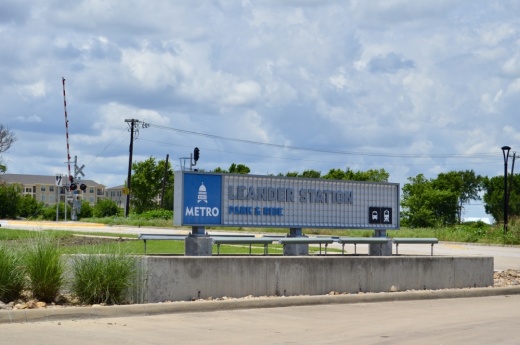Leander City Council members first discussed placing the city’s Capital Metro involvement on a future ballot in May 2021 for voters to decide whether to stay in or leave the public transportation provider.
Council publicly discussed the city's Capital Metro membership in June 2021 when council members and staff discussed the need for more data so informed decisions can be made. Council awarded a study contract in September with The Goodman Corp., for $162,500.
The firm presented its findings to Leander City Council Dec. 16 with a final written report due in January.
The city is expected to generate $328 million in total sales tax revenue between 2021 and 2032, said Lee Nichols, a representative from The Goodman Corp. Half of this amount would be allocated to the city and the other half to Capital Metro since the city of Leander and Capital Metro each levy a 1% sales tax.
Leander residents have access to Metro Pickup service, Metro Rail service and MetroExpress bus service. An October license plate study found that about 48% of transit riders who boarded at Leander Station were Leander residents.
Capital Metro ridership dropped about 85% due to the COVID-19 pandemic. Before the pandemic, each trip cost about $39 per Leander resident. This was in line with the Capital Metro and national averages, said Robert McHaney, a representative from The Goodman Corp. But the cost per trip increased to $214 per trip this fall.
The study found that most trips taken are within Leander to high schools, parks and grocery stores. This would account for Capital Metro’s on-demand pickup service. External destinations include Cedar Park, Round Rock, Central Austin and Northwest Austin to areas such as the Apple campus, the Dell campus in Round Rock, the Domain and the University of Texas.
McHaney said local developers told them there is not a linear relationship between Leander having a rail program and development that would not happen without rail. But the marketability of rail is an asset for East Coast-based firms, especially for firms that are used to light rail in their cities.
Some council members noted that how the information presented in the study will impact their decisions moving forward.
“It’s hard to make decisions about things when you don’t have all the facts,” Council Member Na’Cole Thompson said. “Now we have all the facts to be able to look at both sides of everything.”
“I feel like this kind of data should have been done a while back, and I’m glad that we’re all doing it right now,” Council Member Chris Czernek said. "I don’t know how we don’t actually bring this to the citizens after seeing this data. It’s irresponsible for us.”
Peer city comparison
While other peer cities do not have a dedicated sales tax for transit programs, which means the city can control how much it spends on transit, Leander’s transit program is tied to sales tax dollars.
Peer cities contribute $2 million to $3 million to transit, McHaney said. But Leander is projected to spend $9.8 million on transit in 2021 based on sales tax.
In 2020, Leander spent $158.78 per person on transit service, according to the study. Peer cities without a transit sales tax average $5 per resident in transit program spending.
Alternative transit options
The study firm recommended implementing a full turn-key transit model if the city left the Capital Metro program. This means the city would enter an agreement with a private contractor to provide public transit options to Leander residents.
The program scenarios are scalable, which means services could be added or removed to fit the city’s needs, McHaney said. Models did not include rail service, which would cost about $10 million per year to contract. There are also federal funding opportunities for the potential service models.
These transit scenarios ranged from $1.2 million to $2.9 million depending on the number of trips offered and employees. Employees would include a transit manager and a mobility coordinator. Implementation could take 120 to 180 days to begin service after contracts are executed, McHaney said.
Editor's note: This article has been edited to correct year dates and the total sales tax revenue expected through 2032.






